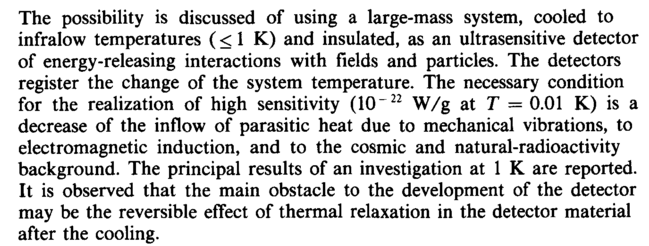|
|

| VOLUME 28 (1978) | ISSUE 6 |
PAGE 328
|
Possibility of producing a bulky supersensitive thermal detector at a temperature close to absolute zero
Neganov B.S., Trofimov V.N.
The possibility is discussed of using a large-mass system, cooled to infralow temperatures (<1 K) and insulated, as an ultrasensitive detector of energy-releasing interactions with fields and particles. The detectors register the change of the system temperature. The necessary condition for the realization of high sensitivity (10"22 W/g at Τ = 0.01 К) is a decrease of the inflow of parasitic heat due to mechanical vibrations, to electromagnetic induction, and to the cosmic and natural-radioactivity background. The principal results of an investigation at 1 К are reported. It is observed that the main obstacle to the development of the detector may be the reversible effect of thermal relaxation in the detector material after the cooling.
|
|


